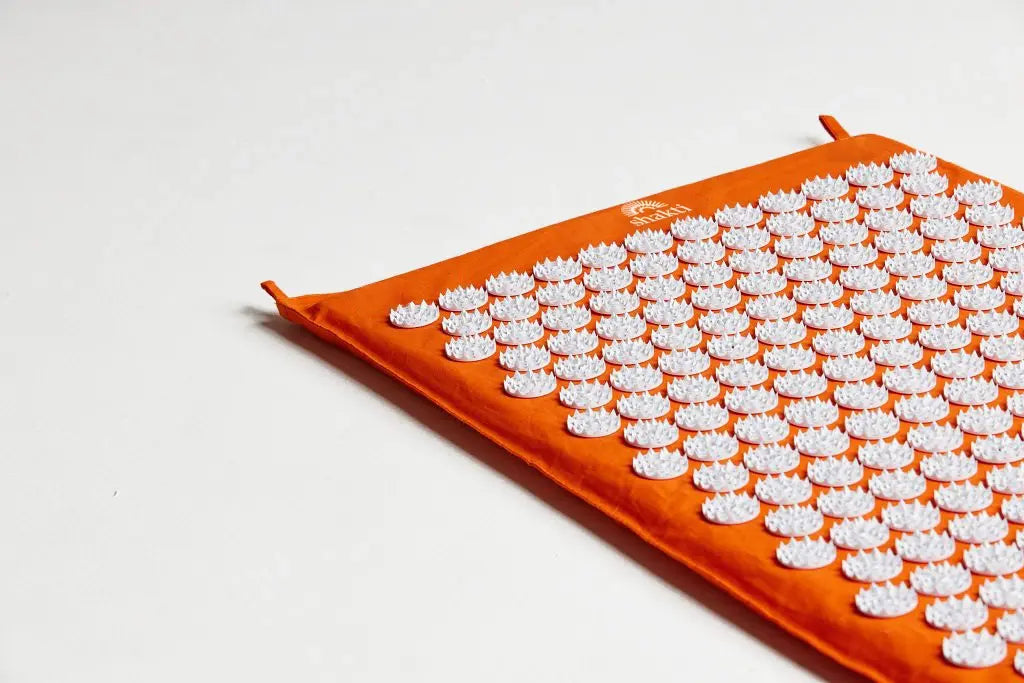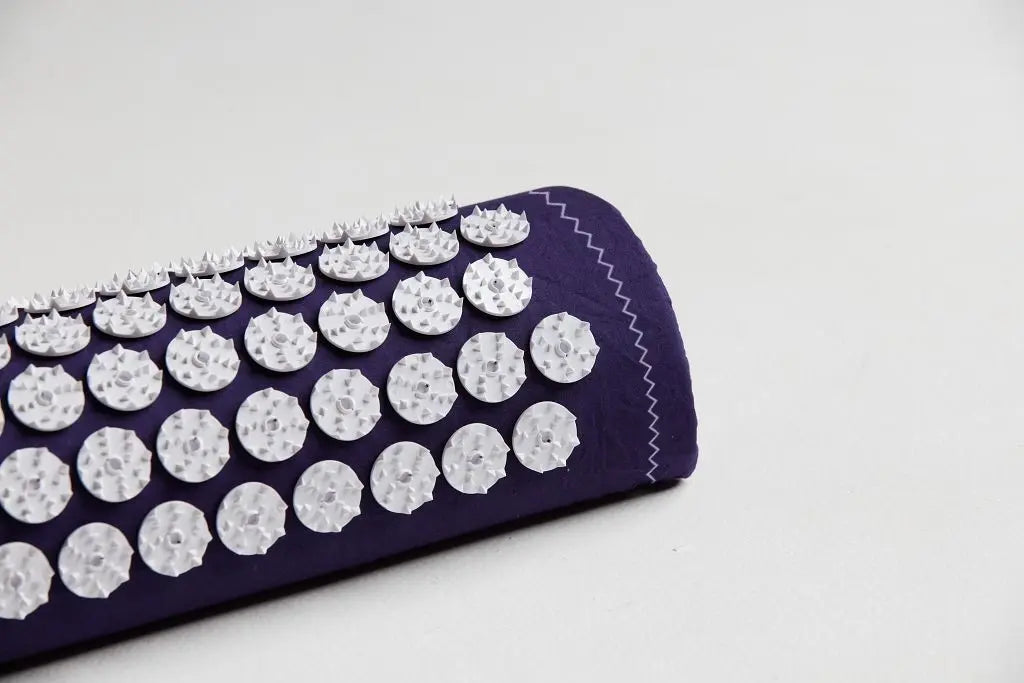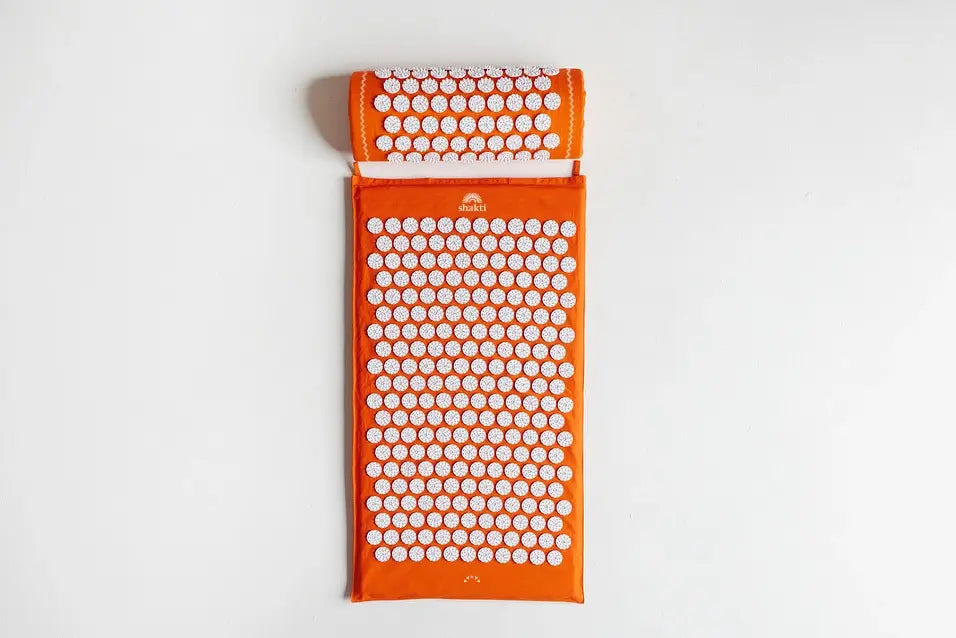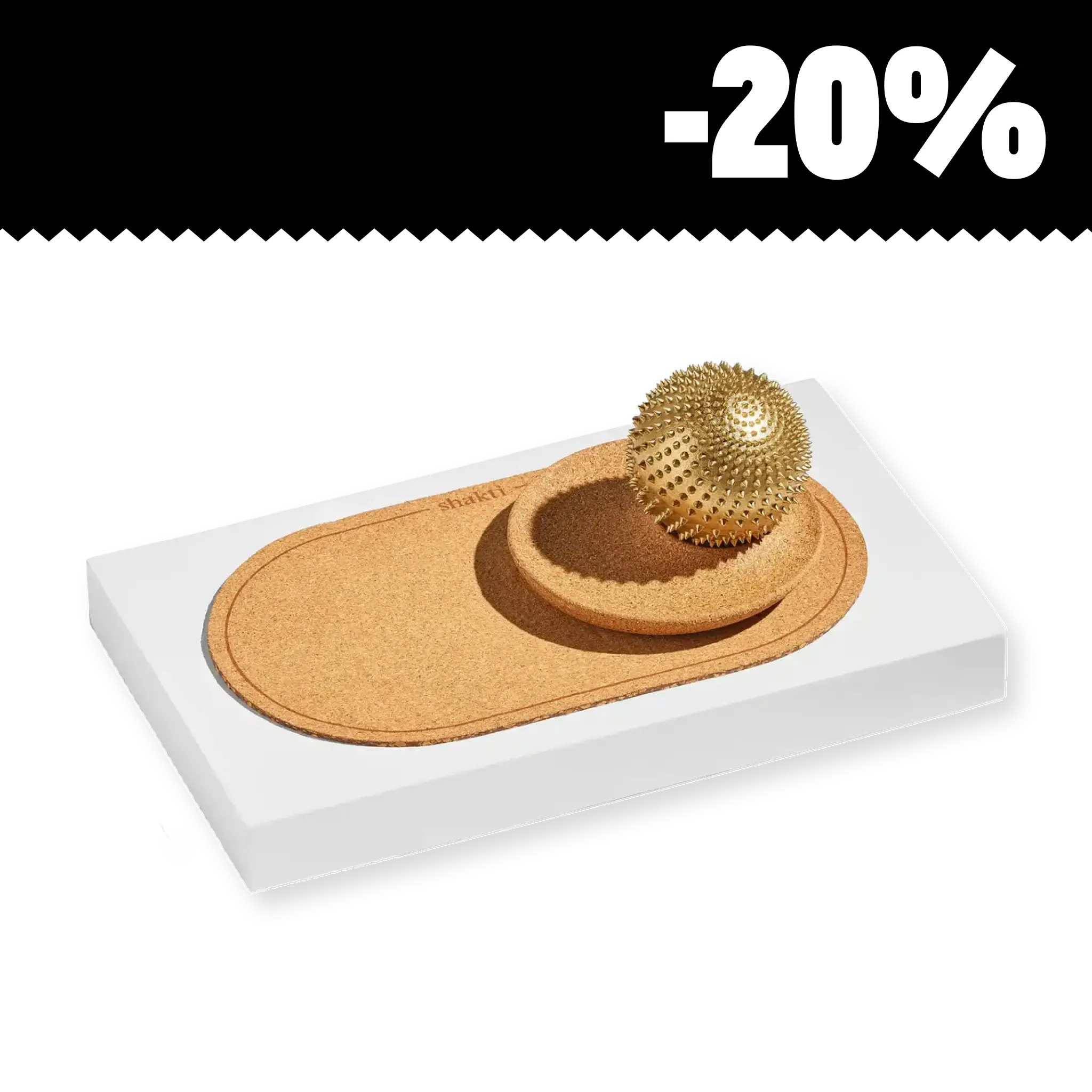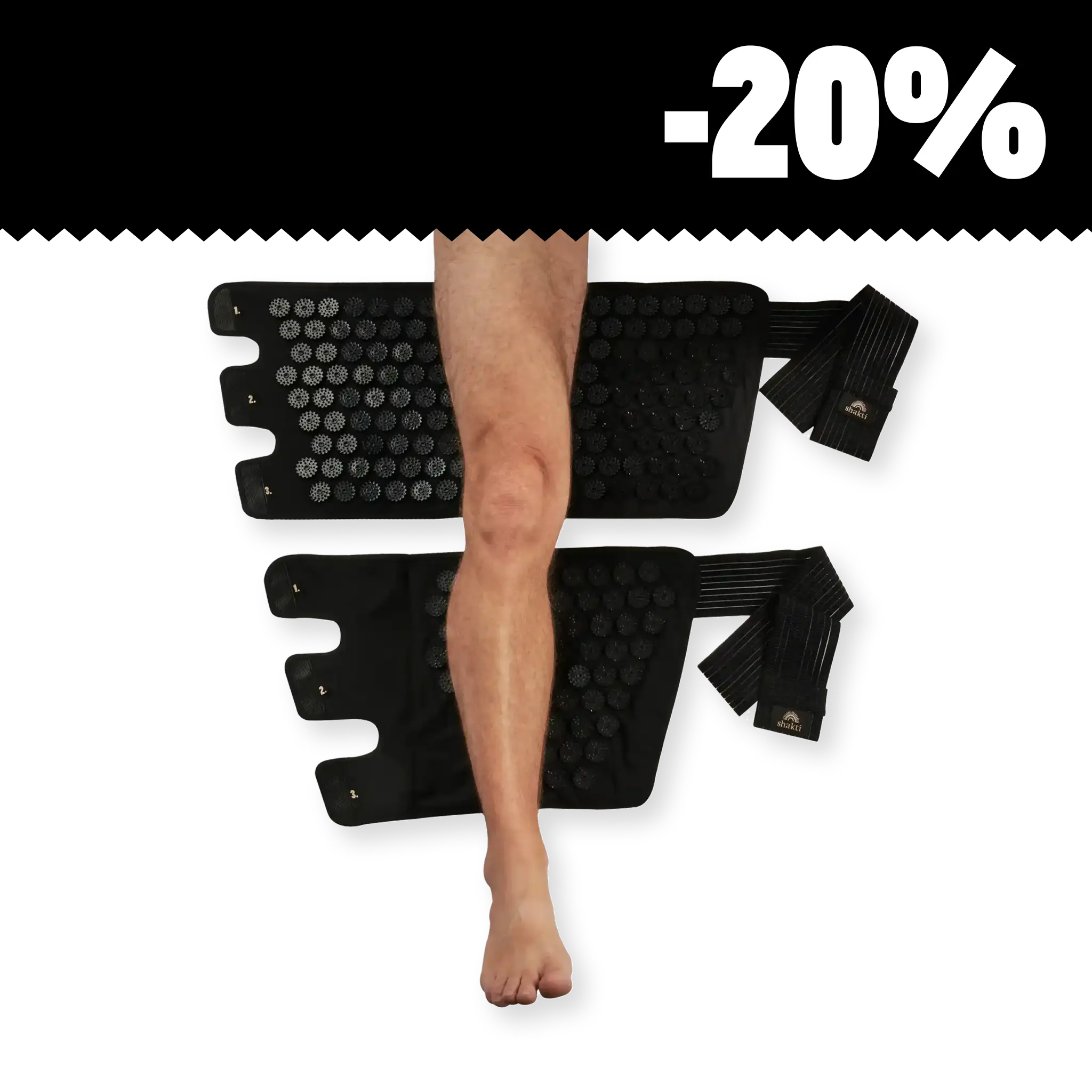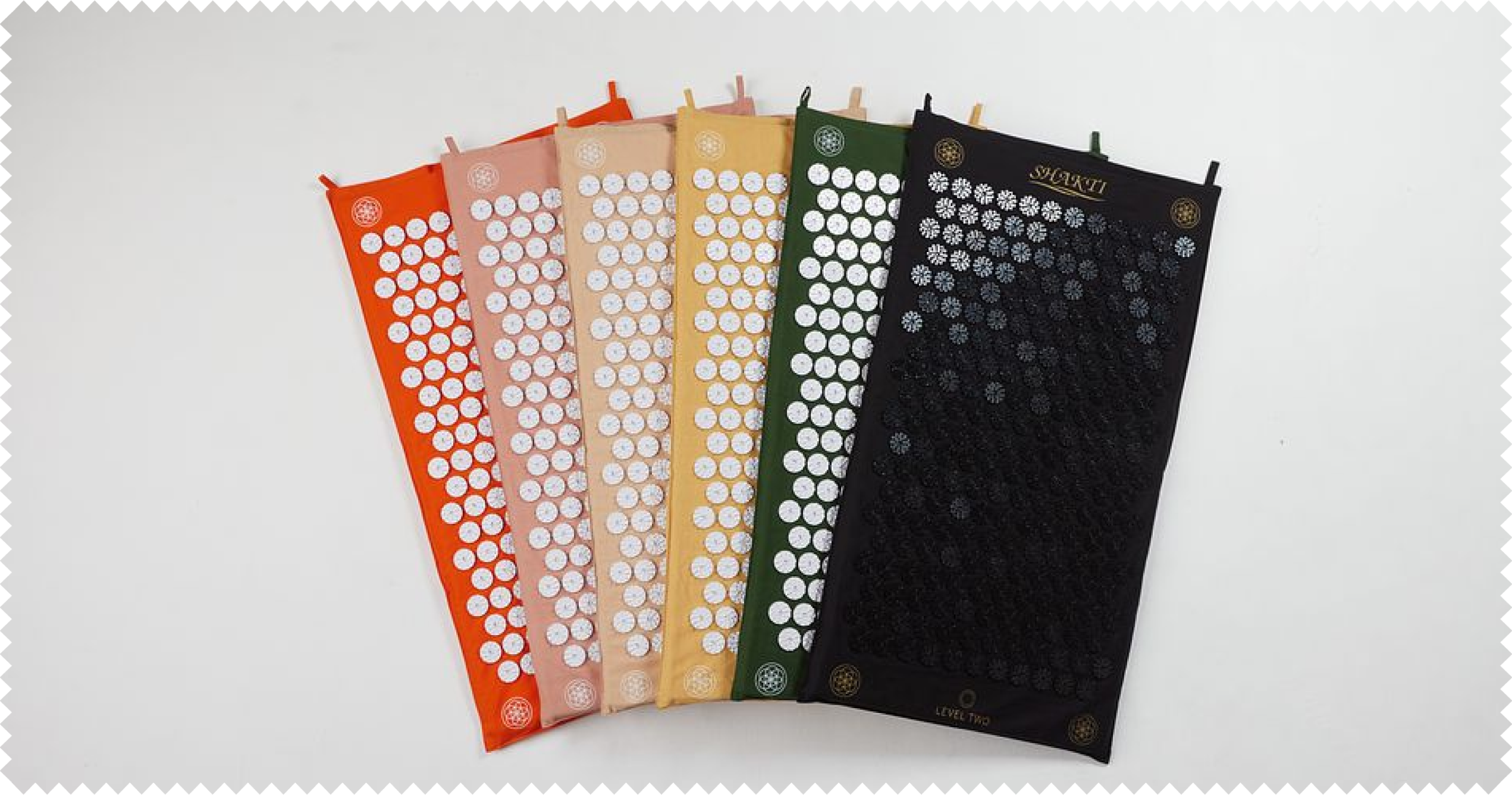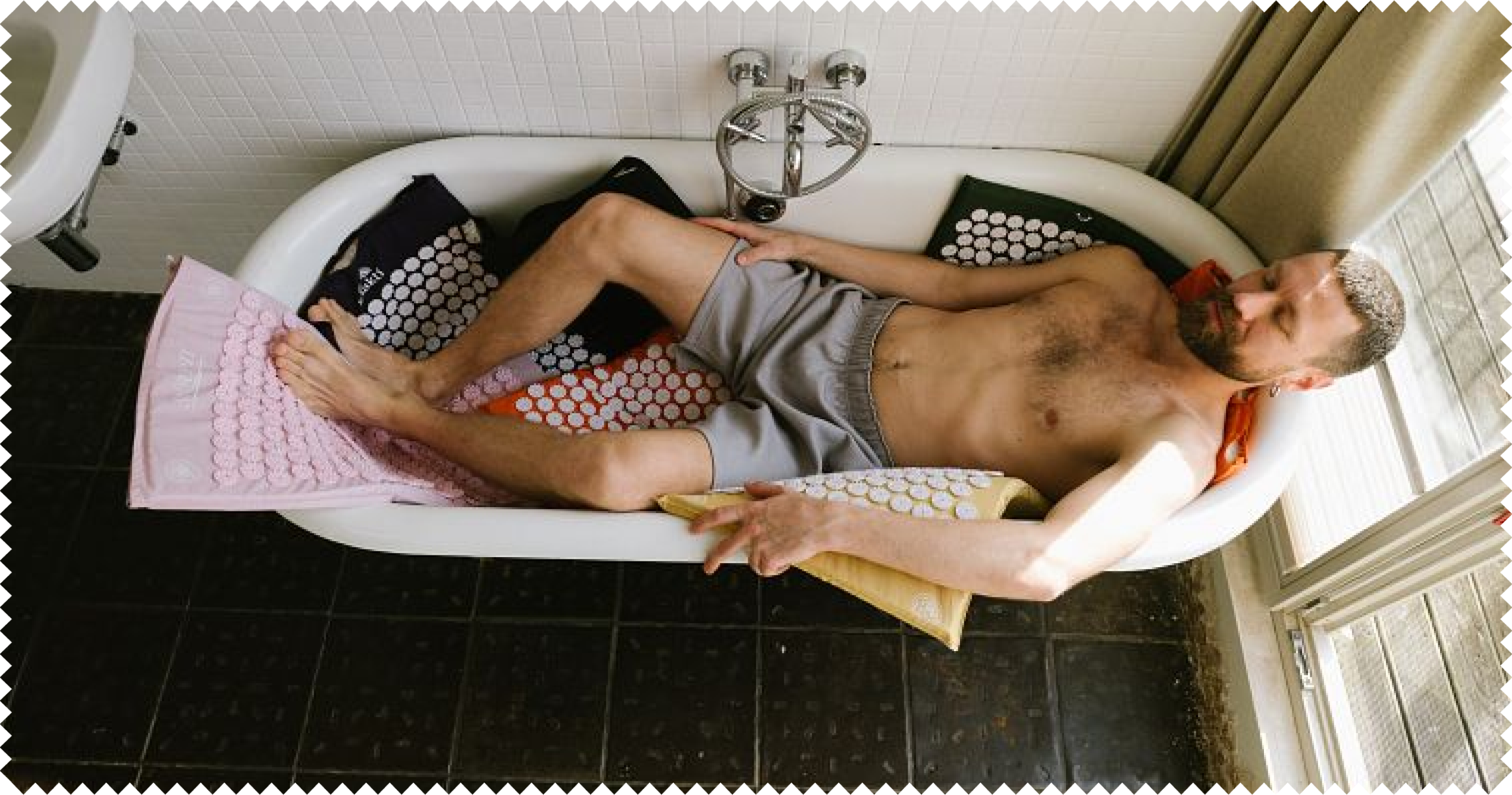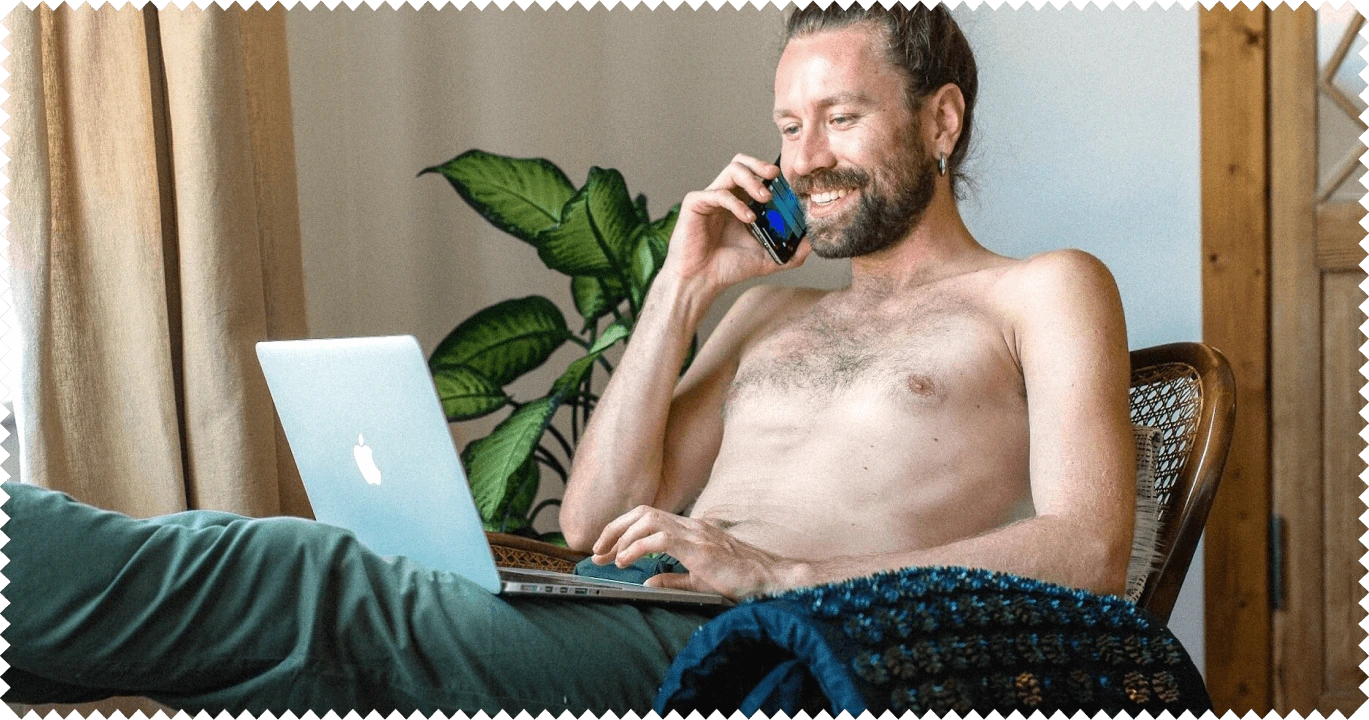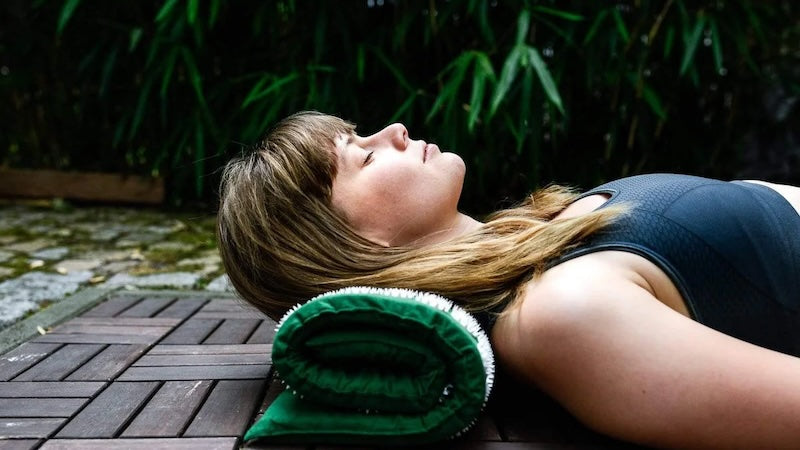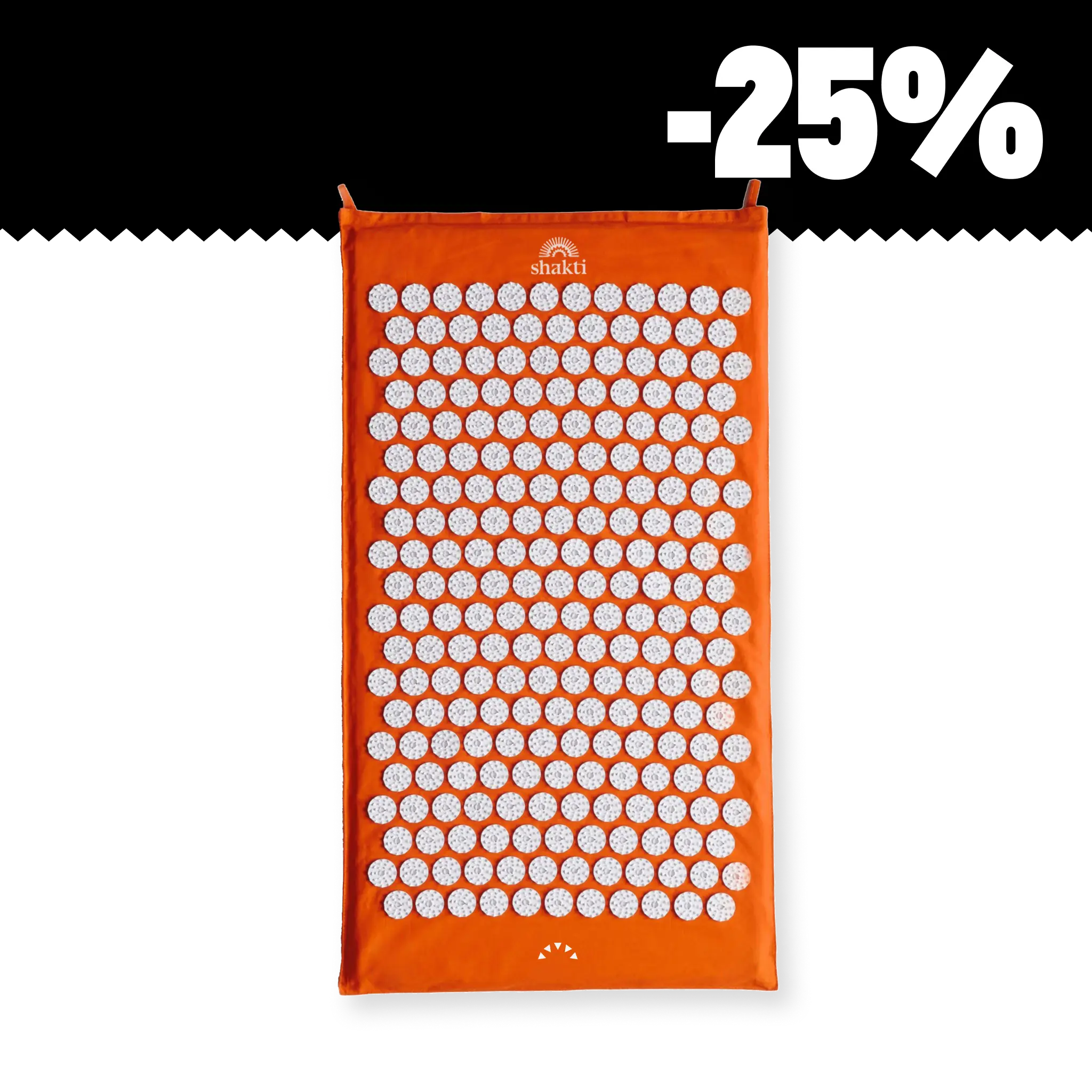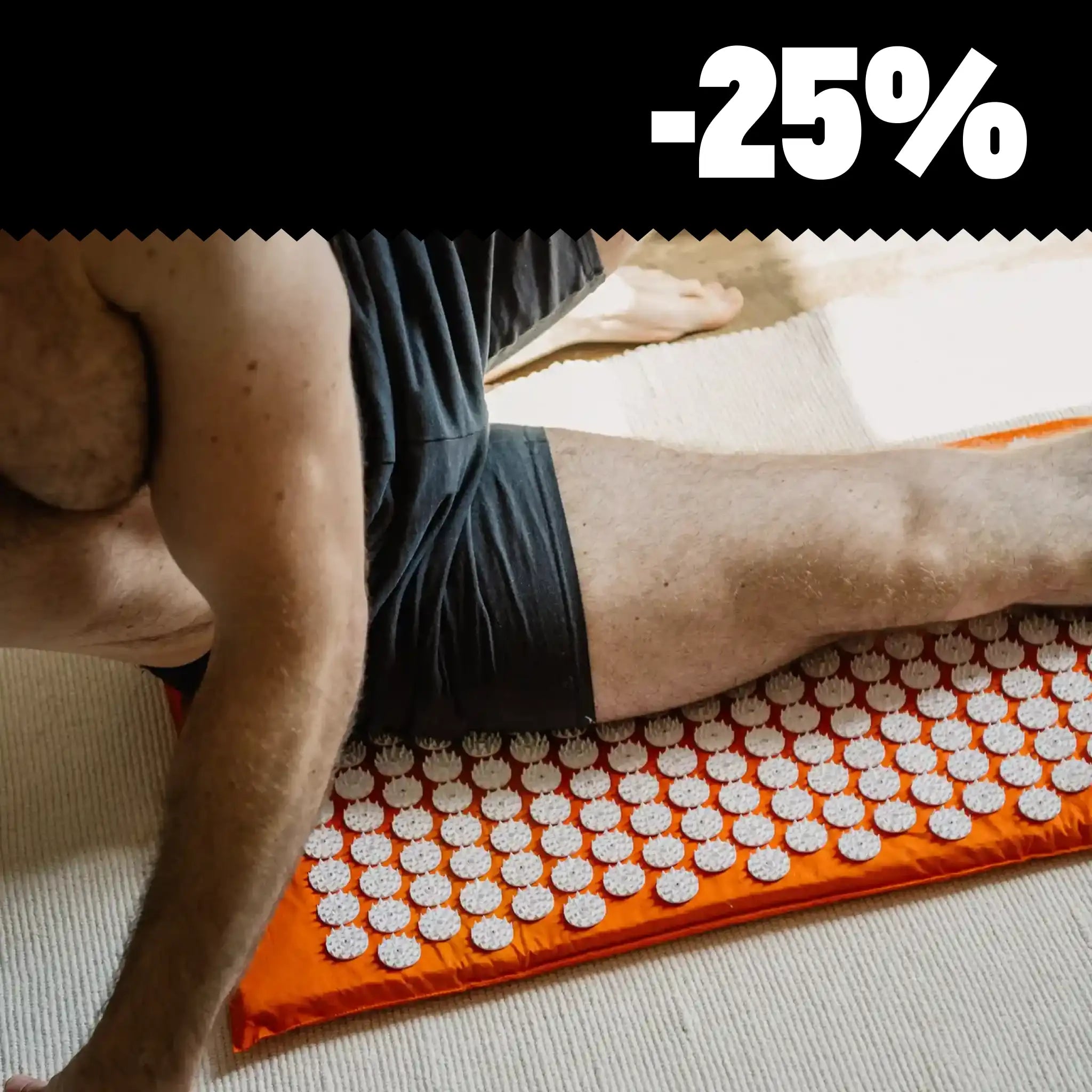Counting sheep, singing songs and getting up in the middle of the night for a hot drink - the number of home remedies for insomnia seems endless and yet they usually do more harm than good. Acupressure, on the other hand, ensures better sleep in the long term and is very easy to learn for home use with a few tricks.
In this article, you will find out how an acupressure mat can help against insomnia and restless sleep and which acupressure points are the right ones for falling asleep.
Content
1. sleep disorders and acupressure
2. practical exercises and acupressure points
3. experiences of an affected person
Sleep disorders and acupressure - healing effect with natural remedies
Normally, a person sleeps regularly for four to eight hours without interruption. If this no longer works, we speak of a sleep disorder. Almost everyone is afflicted by insomnia at some point in their lives. Stress, tension, and pain in particular repeatedly rob people of a good night's rest. In a study conducted by the Techniker Krankenkasse health insurance company in 2017, one in three adults stated that they often had poor sleep. A 2016 Statista survey of 493 women even found that half suffered from regular problems falling asleep.
So if you toss and turn in bed with your eyes open, you are definitely not alone. Stress, constant tension from sitting at the computer and the increased use of smartphones before going to bed are repeatedly cited as causes of sleep disorders. A disastrous cycle begins, because those who sleep poorly do not regenerate properly at night and are in turn much more susceptible to becoming ill under pressure and stress.
In modern medicine, sleeping pills that chemically interfere with the body's natural cycle and force it to sleep are already being used to alleviate sleep disorders, even in adolescents. The problem with this is that when the body is artificially forced to rest, the natural regeneration for which our sleep is actually intended does not take place to its full extent. Medication is therefore not a permanent solution for curing the person with the sleep problem. Chinese medicine, on the other hand, has been successfully approaching the sleep problem from a holistic point of view for thousands of years:
In order to restore the natural sleep rhythm, the underlying imbalance in the body that is causing the disorder must be eliminated. Blocked or overloaded energy pathways, known as meridians, are brought back into balance by applying pressure to certain parts of the body. To be able to use this healing knowledge to help yourself with sleep disorders, you need to learn two things: how to find the blocked areas and how to apply pressure.
Acupressure to fall asleep: practical exercises and tips against sleep disorders
Intuitively, most people naturally press on certain points on the body when they feel pain, for example in the neck or at the temples. Pressing on these parts of the body, called acupressure points, releases the blockages, most of which can also be physically felt as painful tension. In most cases, the point hurts significantly as soon as pressure is applied or feels tight and hardened. There are also acupressure points for sleep disorders. However, the knowledge of where the most helpful points are has unfortunately been lost or never known in many places in the Western world and is only now slowly finding its way into medical treatments for sleep disorders and other problems.
We have put together some exercises for you that can be very effective for sleep disorders. Think of them as a guide to help your body and always remember to listen to your own feelings, because nobody knows you as well as you do. A balanced diet is also very important in addition to acupressure to prevent sleep problems. If you are pregnant, have physical limitations or questions, don't forget to talk to your doctor about acupressure beforehand.

The easiest way to use acupressure for sleep disorders is the Shakti Mat acupressure mat. This is a pressure point mat with tips made of high-quality ABS plastic, which you can lie on with your back if you have trouble sleeping. The advantage is obvious: acupressure with the Shakti Mat can be used without any prior knowledge. What's more, you don't need to use your own strength to stimulate the pressure points, because people who sleep badly often also suffer from weakness and find it difficult to muster the strength to press the acupressure points.
We show you helpful points for acupressure against sleep disorders in the following pictures and explain in the description what you need to do to stimulate them. For many of the points, the Shakti Mat can be used as a wonderful aid to help the body through a restful and healthy night. How does it work? In addition to pressing the acupressure points, Shakti Mat stimulates blood circulation and stimulates natural hormone production, which in turn ensures that the body's own self-healing powers can be fully utilized, because when tissue fluid and blood are well distributed, the body can also successfully transport its healing messenger substances to where they are needed.

H 7 Gate of the mind - acupressure point for mental overexcitement & night sweats
You will find the point on the crease of your wrist on the inside of your hand in extension of the inside of your little finger. Press H7 firmly for about a minute or massage it again and again in stroking movements from bottom to top towards the palm of your hand, close your eyes and breathe deeply. Then switch arms and do the exercise on the other side. This point is excellent for alleviating sleep disorders caused by mental overstimulation, i.e. for anyone who has problems with stress. It is also said to be very helpful against cold night sweats.

LG 16 Windvilla (GV 16) and B 10 Heavenly Pillar - acupressure points for sleep disorders
The LG 16 acupressure point is located in the hollow at the back of the head directly under the base of the skull. The easiest way to press it with your hands is to press both middle fingers of your hands firmly into the indentation and tilt your head back slightly, i.e. lean on your fingers to increase the pressure. You may have to yawn as you do this.

Points B 10 are located approximately 1 centimeter below the base of the skull on the two muscle cords to the left and right of the spine. They can be pressed firmly with the fingers. Alternatively, it can also be pleasant to massage upwards over the points towards the skull. Stimulating the points with the Shakti Mat is easier than applying pressure with your hands: Roll up the mat and lie on it so that the spines stimulate the points. The Windvilla point is used in Chinese medicine for various sleep disorders and mental overload. The Heavenly Pillar helps with insomnia, stress and exhaustion.

B 38 Vital diaphragm - acupressure point against insomnia, anxiety & worrying thoughts
Acupressure point B 38 can be stimulated particularly well with an evening round on the Shakti Mat. The point is located between the spine and shoulder blade at heart level and is traditionally used to treat insomnia and emotional tension that hinders sleep. The acupressure mat does a great job here and makes the point suitable for anyone who is unable to reach this part of the body themselves. If you place a firm Pillow under the lower head area so that the mat presses firmly into the skin, B 38, B 19 and LG 16 can also be pressed wonderfully at the same time as the acupressure mat, as long as it feels pleasant.

EG 17 Sea of Tranquillity (CV 17) - acupressure point for nervousness and congestion in the chest area
While the mat exerts pressure on the points on the back of the body in the supine position, you can stimulate EG 17 in the middle of the sternum with your hands. The point is about 3 thumb widths above the base of the bone in the middle between the nipples. Here too, a minute of deep breathing is a good guide. If the point is very sensitive and it feels uncomfortable to press on it, you can also simply place the ball of your thumb on the spot and use the weight of your hand as a lighter pressure. If the pressure is still uncomfortable, you can also massage upwards over the point with your thumb or the ball of your hand.
Another tip from us: If you are very sensitive, you can simply keep a thin shirt on or place a cloth on the mat to soften the pressure from the points. The acupressure mat for sleep disorders can be used directly in bed or on the floor.

Shakti Mat acupressure mat for sleep disorders - Experience
To find out exactly what the users themselves are saying, we at Shakti Mat asked our customers about their sleep and found out how they help themselves with the acupressure mat for sleep disorders:
Michaela - ShaktiMat helps with sleep disorders, migraines & headaches
Can you briefly describe what your sleep problems were before you discovered the acupressure mat and what has changed since you started using it?
"I woke up at least once a night between 3 and 5 am. Every night, actually. I also often woke up with a slight headache. Now I lie on the Shakti Mat every night before going to sleep and actually sleep through the night. It's very rare that I wake up again during the night. I also very rarely wake up with a headache."
What tips can you give people with problems falling asleep and migraines about using the Shakti Mat? How do you use it?
"I lie on the mat every day, sometimes even several times a day. I usually meditate (e.g. with the Headspace app). It's all very relaxing. I make sure that I lie with my neck on the tips, so I put a Pillow underneath so that the tips can also work on my neck. If I feel a migraine coming on, I lie down on the mat for at least 15 minutes as soon as I can. When the migraine once announced itself with an aura, I went to the mat immediately after the aura and the attack didn't get as bad as I would normally have expected. I also put my feet up on the mat. This also seems to have a positive effect.
Overall, I have the impression that my migraine attacks are not as intense as before. The combination of mat, meditation and regular use seems to be a good formula for prevention. I am glad that with a one-time investment I have found something with which I can actively prevent my migraines myself, without having to regularly pay a lot of money for outside treatments (like osteopathy, acupuncture, massage, which are also great, but unfortunately also very expensive)."
Susanne - After initial skepticism, the Shakti Mat
In your review, you told us that the Shakti Mat acupressure mat surprised you positively after initial skepticism and has since become a helpful companion for better sleep. Can you tell us how this came about?
"I sit in front of the computer a lot and also like to use my smartphone to surf on the couch in the evenings, which means I often have to deal with tension and shoulder problems. And my rather stressful job sometimes doesn't allow me to fall asleep as quickly as I would like. I treated myself to a massage from time to time to relieve the tension and also worked out in the gym with the black roll, but you don't do that every day. I then saw an advertisement for the Shakti Mat on Facebook and thought at first that it was some kind of "esoteric gimmick". I don't believe in acupuncture or homeopathy etc., but the fact that mechanical action on the body can have an effect somehow made sense to me. Nevertheless, I was ambivalent as to whether it was worth the money. I wasn't primarily thinking about sleeping better, but rather wanted something that I could use spontaneously to get my tension under control. The better sleep came as a positive side effect.
I did a bit of research beforehand and looked at all the red backs on Instagram - and also read reports from people for whom the Shakti Mat was nothing because it simply hurt too much. Of course, that was another point. What if I buy one of these "spiky mats" and then I can't use it because it stings me too much? But I thought, it's worth trying and you can certainly send it back.
I first lay down carefully with a T-shirt on top. That didn't hurt at all, so I went for it straight away. The first few times I only did 5 minutes. I noticed that it felt pleasantly warm afterwards. However, it wasn't as if all my pain and stress were immediately blown away. As I had read that some people even fall asleep on it, I thought it would be a good opportunity to do it in the evening before going to bed and I was totally surprised the first time I did it. I lay on it in bed for about 15 minutes. And afterwards I actually felt wonderfully light. My back was all red, which for me was also a sign that something had happened. After I had packed the mat away (just don't put it on the floor so that you don't accidentally step on it in the dark ;) ) I went back to bed and actually fell asleep in no time at all - and I didn't wake up at night, which is usually the case. Since then, I've been using the Shakti Mat regularly before going to sleep. Not every time, but every 2nd or 3rd evening - and every time I sleep perfectly. I have even fallen asleep on it twice. Since I've had the Shakti Mat and have been using it regularly, I also feel that my shoulder problems have decreased. I used to have shoulder pain every night - it's gone down significantly."
You compare the effect of the Shakti Mat with a professional massage. For those who are curious, can you describe how it feels for you to use the acupressure mat?
"It's always a bit of an effort to lie down on it. I bend my legs and try to roll my back well on the mat. It also puts a lot of pressure on the mat, which intensifies the effect. The first moment is always painful, but it's not a disgusting pain, it's a good pain - like stepping into a bathtub that's too hot. You know it will soon subside. I usually breathe very quickly in that first moment. My heart beats faster, my body has to cope with it first. I then concentrate on my breathing and try to breathe into the pain. You forget all about your stressful everyday life because you are forced to concentrate only on yourself. It takes a few minutes. I can feel that the prick "wanders". Sometimes it stings more in one place, then less in another. I imagine that something is being 'released' where it is stinging more strongly and I really enjoy it. If it hurts, something happens ;). After what feels like 5 minutes, I slowly stretch my legs out so that I can fully relax. The "pain" is then somehow no longer pain, but pleasant. Hard to describe. But I notice how everything warms up and how I relax more and more. Every now and then I fall asleep. Then comes another moment that takes some effort - getting up. I try to do this as quickly as possible. It's a bit like ripping off a plaster. My back is bright red afterwards, but it doesn't burn. It's a pleasantly warm and ultra-light feeling, as if all the weight has been lifted. I usually only feel this light and relaxed after a 30-minute massage. My back and shoulders feel more flexible. The advantage over a massage is that it saves a lot of time and is cheaper. And it's much more pleasant than always rolling around on the black roll, especially as the Shakti Mat doesn't give you the annoying fascia hangover that often makes your back feel worse than before.
My mother also has neck and sleep problems. I gave her one and she is also super happy. Now I'll probably treat myself to the black luxury model. I don't dare go for "advanced" yet."
The acupressure mat is particularly easy to use and solves many sleep problems, but it cannot work miracles on its own. Because the imbalance of energy that is treated with acupressure has a cause that is usually not eliminated immediately, it is important to observe your everyday life with open eyes in addition to acupressure: Where does stress arise? Does my diet help or harm me? Am I breathing deeply and getting fresh air regularly?
Every body is different and individual. It is important to really get involved in acupressure and - as with sport - to create good conditions and practise regularly. That way, one day you'll have mastered the exercises so well that you won't even have to think about them anymore and can slumber blissfully towards the morning.
We wish you a good night.
If you would like to discuss the topics of acupressure and acupressure mats for sleep disorders, please leave us a comment and join our Facebook group. There is a lively exchange on the subject of acupressure mats and you can ask questions about their use.
You can download the free e-book by clicking on the link below once you have registered for our monthly newsletter.
About the author
Antje Wickboldt is a freelance author from Berlin. She has been studying the body's self-healing powers for over 10 years and, as a lecturer, explains in interactive presentations for companies and offices how tension can be relieved with the help of acupressure and massage.
Sources
- Andrews, Synthia and Dempsey, Bobbi: Acupressure & Reflexology for Dummies. Wiley Publishing, Indianapolis 2007. p. 58 ff.
- Dr. Stein, Aaron: Acupressure Guide. Alleviate Headaches, Neck and Joint Pain, Anxiety Attacks and Other Ailments. Mobile Reference, 2nd edition, Canada 2009. p. 80 ff.
- Reed Gach, Michael: Healing Points. Acupressure for the self-treatment of diseases. Knaur, Munich 1992. p 297 ff.
- Statista: Problems falling asleep or sleeping in Germany by gender, 2016 (Viewed: 04.07.2018)
- Techniker Krankenkasse: TK sleep study 2017, 2017 (Inspection: 04.07.2018)



